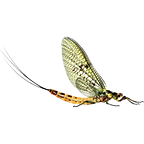You may not have read the bible recently, but you know the story of the garden of Eden in Genesis. Adam and Eve are naked in a wonderful place created by God, YHWH. He tells them not to eat the forbidden fruit of the Tree of the Knowledge of Good and Evil or they will die. But a serpent tells them they should eat it, they won’t die, and “their eyes will be opened and they will be like God, knowing good and evil”. And so Eve eats it, and so does Adam. For their crime they are expelled from paradise to stop them gaining immortality by eating from the Tree of Life. The serpent is condemned to crawl on his belly. Eve is condemned to pain in childbirth and to be ruled by her husband. Adam is condemned to have to work hard for his food every day until his death. Later commentators take this to mean all Adam and Eve’s descendents are born with original sin which must be washed away by baptism even after Jesus’s ultimate sacrifice.
You know this story. You might not have thought about it for a while. If you do now, it might seem a little odd. Why is God SOOOO extra upset about his creation eating this bit of fruit? What’s it to him, the all powerful, after all? And if it’s so bad, why does he let it happen?
But did you know about the gnostic retelling!? There’s one called the Apocryphon of John and it was written some time before 180CE. It turns the meaning of the story on its head.
In this version, Jesus tells John that YHWH is a bad demiurgic god who creates matter and corruption and is opposed to a good god of peace and light. Adam is a creation of the good god who holds a spark of the light within him, but has forgotten his divine nature. YHWH creates Eden as a false paradise to trap Adam in matter and prevent him ascending in spirit, free from the body that restrains him, to rejoin the good god of light. In this garden “Their food is bitter; their beauty is corrupt. Their food is deceit; their trees are ungodliness. Their fruit is poison. Their promise is death.” When YHWH tells Adam not to eat from the Tree of the Knowledge of Good and Evil he does so because he knows if Adam does eat, as Genesis says, his “eyes will be opened and he will be like God”. Eating the fruit reveals to Adam his true divine nature and helps him escape the clutches of YHWH who wants to keep him in bondage of material flesh. And when Adam does not die, YHWH is turned into a liar with empty threats. In this version, Eve is a hero, because she gives Adam the fruit to eat. And the serpent is Christ, an emissary from the good god of light informing Adam that he should eat the fruit, helping him know good and evil and rediscover his divinity.
To my mind, The Apocryphon of John is a more coherent interpretation of the salient ‘facts’ or motifs of the story. The line drawn between the dots seems more logical. It is neater, and more elegant.
(But as I will discuss another time I do not see how elegance or simplicity can be a predictor of truth despite that being the frequent desire of physicists, simpletons and bigots).
Of course there are more dots that could be plotted, and many more lines that could be drawn, and how literally should one take all this anyway? If either Genesis or the Apocryphon of John is a mystery, or an allegory, or a metaphor — to inform in a deeper way than simplistic logical explanation — what is the intention of its author(s)? And is that intention even relevant to the effect caused on the reader? Can there be a truth to this that isn’t personal?
